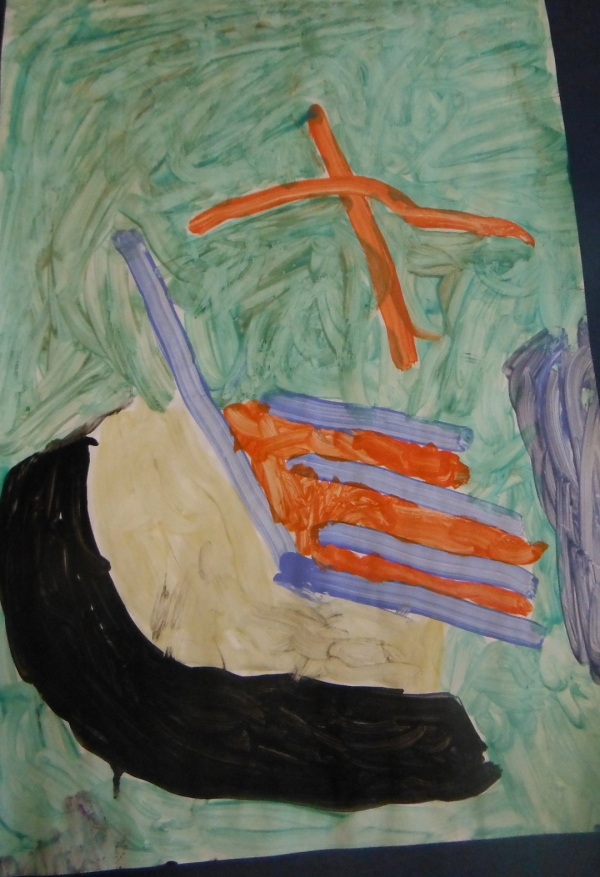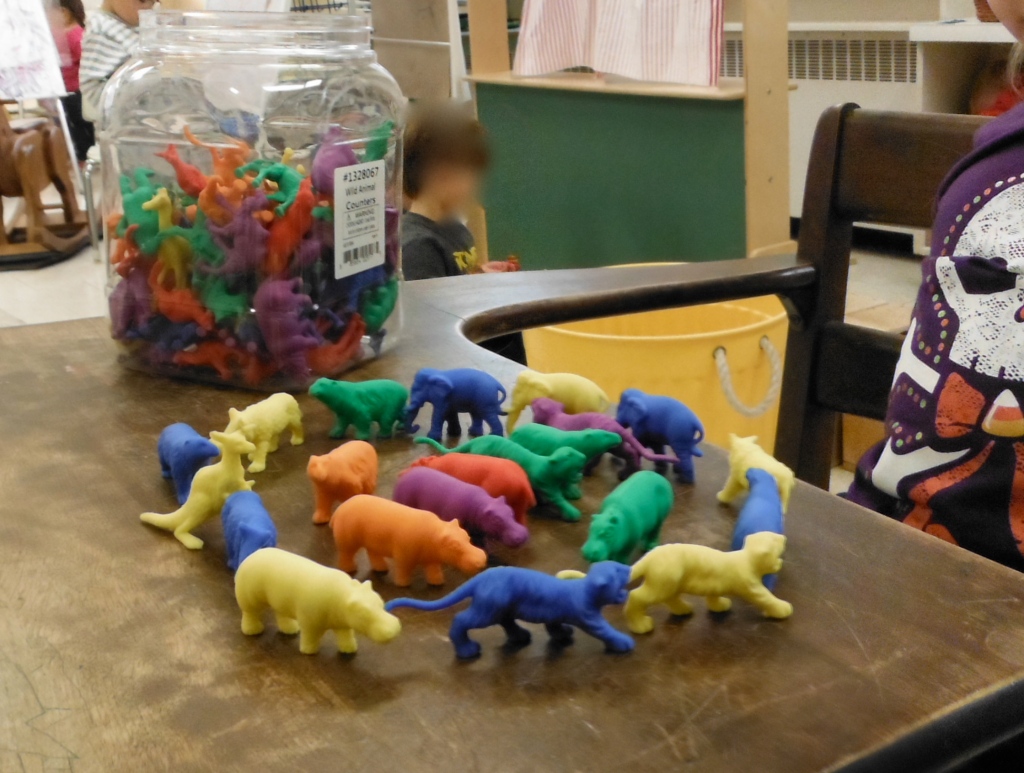I’ve been asking myself a lot about expectations lately. What, as teachers, do we expect from children? What do we expect from ourselves? How do we define our roles in schools and how do those roles, in turn, define us? For instance, how does what we expect from children affect how they behave and what they do in the classroom?
I had an interesting conversation with a colleague last week. She asked me why my students are so calm at lunch. I tried hard to explain to her about self regulation. I mentioned that they’re rarely told what to do so they’re pretty skilled at making good decisions for themselves. They decide when to eat, who to sit with, what to eat, and where to sit. But I think it goes deeper than that. It helps me to sit back sometimes and to really listen carefully to their conversations. Here’s one that I found particularly revelatory.
N is a 4-year old who often has trouble self-regulating. He yells a lot and sometimes gets very upset when he doesn’t get his way. J is also 4-year old. She is very verbal and likes to tell very complex stories about the work that she makes in class. One day they were together in the art studio working on a project.
When I arrived, J was gluing acorns, shells, and rocks onto a long line of glue. N was watching with interest but not participating actively in the creation. In the video, I can see him periodically looking out into the classroom when interesting noises catch his attention but he stays with J. Something about what she’s doing is holding his attention. J passes the acorns to another child and then says “I need glue, I need glue”. She gestures to another child at the table and asks: “Can I have your glue?” Then she says to herself “Oh, yeah, there’s glue over there.” She goes to get the glue and proceeds to add more glue to her artwork. N watches all of this with interest. When I shift the camera to another child, N calls me back:
N: Madame, Madame, J is making this for me.
Mme: Oh, she’s making it for you.
N: Yes, ’cause I was a baby.
Mme: You were a baby.
J: Yeah, we were playing a game.
At this point, N picks up one of the bottles of glue and begins making little polka dots of glue on the page. J says: “We need lots and lots of glue.” It’s the first time N has taken an active role in the creative process. They continue adding glue. Eventually other children claim the glue bottles while J and N are occupied gluing shells.
J: It’s full. (meaning the line of glue is full of shells)
N: We need some more glue. (noticing that the glue bottles have gone missing) Hey, we need that glue!
This is the point at which N would usually start yelling and might have to be removed from the environment.
Instead, J says to the child with the glue bottle: “B, can we use this for a minute?”
Then she says to N: “You just have to ask nicely.” At the very end of the video, we can hear another child asking: “Do you need this glue?” N replies: “We already got some.”
I know this little interaction might seem pedestrian but here’s what I found incredible about it: I could have stepped in at any point. I could have encouraged N to participate more actively, I could have instructed J to change her design (perhaps to align with some particular curriculum expectation), I could have asked them to use different materials, less glue, etc… I certainly could have stepped in when N started to get upset. I chose to say almost nothing. Why?
I confess that it’s a bit difficult to articulate.
I believe that they can figure it out and I believe that the process of doing so is more valuable than instruction from me ever could be. I also believe that the lessons they learn about self regulation when they figure things out for themselves are far more sticky than any formal character education I could ever do. I believe they can and so they do!



